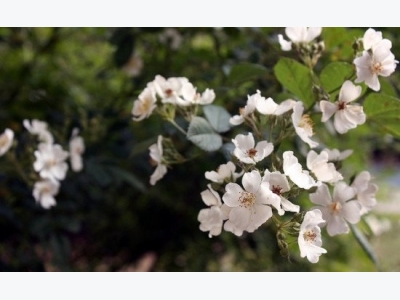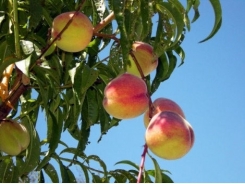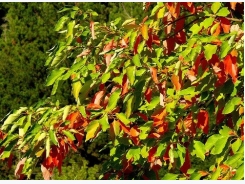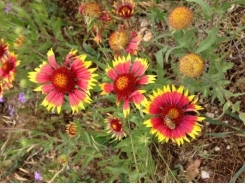How to Get Rid of Invasive Multiflora Rose

Creative Commons Flickr photo courtesy of Aidras
Every rose has its thorns, and multiflora rose is no exception. While this lovely ornamental bush appears friendly enough, its thorns will get you.
In addition to those thorns, this pretty shrub from Asia will propagate rapidly through seeds and through stems that take root easily. Its proliferative nature and spreading growth habit make it a very difficult plant to control. Introduced to the U.S. as an ornamental, this plant has become an overbearing guest who has worn out its welcome.
With no natural system of checks and balances here in the U.S., multiflora rose has morphed into an invasive plant that has taken over much of the native vegetation in many national parks in the northeastern portions of the U.S. Throughout the Midwest, multiflora rose is considered a noxious weed. And in Maine, Massachusetts, and New Hampshire, multiflora rose is considered an invasive species. For the everyday gardener in the U.S., this means that multiflora rose is a plant to be aware of and to avoid cultivating.
Multiflora rose was not always considered a nuisance. It has long been admired for its delicate blooms. Its hardy root system has been useful along roadways to prevent erosion. Its bushy form has been useful as hedging for privacy and as living fencerows to keep livestock in. In spite of its history, the negatives now far outweigh the positives as it has infested pasture and farmlands at a staggering rate.
Multiflora Rose Identification
Multiflora rose looks very similar to other varieties of native rose bushes. So, before you take measures to control or eradicate a suspicious rose bush, make sure that you are dealing with a multiflora rose. Please watch this short video to learn how to identify a multiflora rose. If you are not certain of the identity, have your plant verified by someone who really knows.
Multiflora Rose Control
Since multiflora rose is not easily controlled, the goal has become to eradicate it. The best method for getting rid of this plant is through a combination of mechanical and chemical techniques. Mowing is a first action to take. It prevents seedlings from further development.
For a fully developed plant, digging, pulling, and cutting the bush to a stump is effective if you treat the stump with an herbicide. Several applications of herbicide may be required. For larger fields and infestations, prescribed burns have been effective. A combination of bulldozing and herbicides has been effective, too.
There are some biological methods for eradication that are currently being tested, but at this time are considered too preliminary to depend on. Surprisingly, they both involve Mother Nature. She may have stepped in to help native plants in several regions to regain the upper hand over the multiflora rose. A viral infection is sweeping through infested areas of multiflora rose and is infecting large populations. The virus takes 3 to 4 years to completely kill the plant.
Researchers are taking advantage of the opportunity and are working to present the virus to areas that have remained uninfected. Unfortunately, native roses as well as your garden variety rose bushes are not immune to this virus. As the multiflora roses succumb to the disease though, the native populations will hopefully be restored. This virus has so far been an advantage for the fight against the multiflora rose.
Another biological tactic in the fight against the multiflora rose involves a small insect that resembles a wasp. This insect, called a rose seed chalcid, has been imported from Japan to actually destroy many of the seeds of roses to help prevent further invasive growth. These methods will take years, and the consequences are difficult to predict.
As a gardener, you can help by being aware of the threat the multiflora rose presents for native varieties of vegetation. In spite of the alluring aroma of this rose, don't be tempted to take a snip. And avoid taking a cutting from rose bushes along roadsides unless you can be absolutely certain the rose is not multiflora. If you are harboring a multiflora rose in your landscape, you should strongly consider getting rid of it as its seeds may be wreaking havoc somewhere unknown to you.
The best roses to plant in your own garden are those that are native and specific to your region. Visit your local nursery or extension office to learn more about how to enjoy roses without hosting one of the most unwanted plants in the country
Related news
Tools

Phối trộn thức ăn chăn nuôi

Pha dung dịch thủy canh

Định mức cho tôm ăn

Phối trộn phân bón NPK

Xác định tỷ lệ tôm sống

Chuyển đổi đơn vị phân bón

Xác định công suất sục khí

Chuyển đổi đơn vị tôm

Tính diện tích nhà kính

Tính thể tích ao



 How to Grow Statice
How to Grow Statice  How to Grow Gaillardia (Blanket Flower)
How to Grow Gaillardia (Blanket Flower)